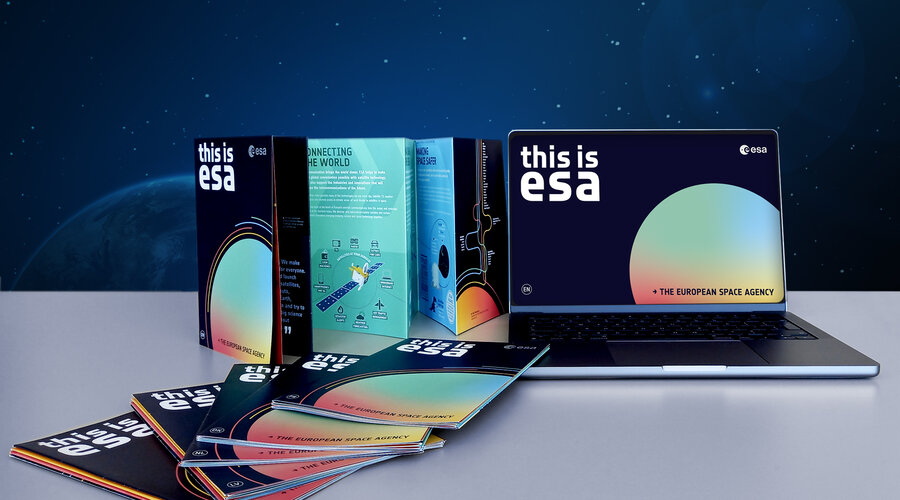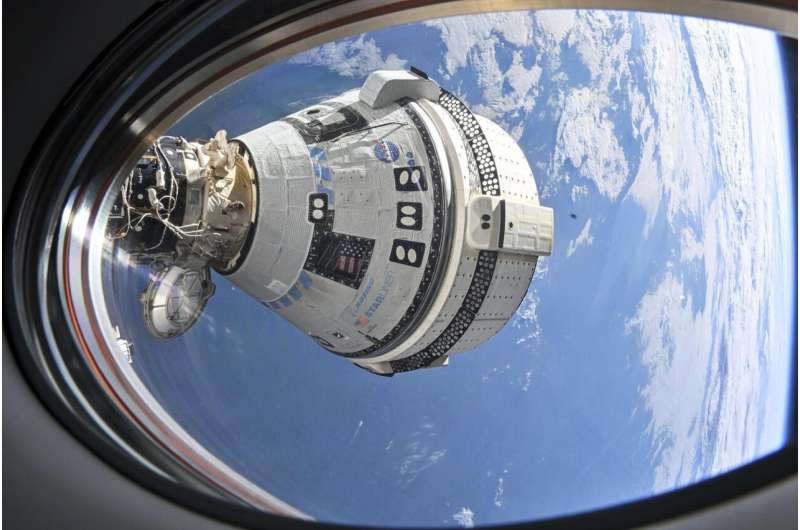
Copernical Team
Watching Salsa’s reentry live from the sky

On 8 September 2024, the first of four Cluster satellites will return home and burn up in Earth’s atmosphere in an uncontrolled ‘targeted reentry’ over a remote area of the South Pacific Ocean.
In the nearly 70 years of spaceflight about 10 000 intact satellites and rocket bodies have reentered the atmosphere. Yet we still lack a clear view on what actually happens during a reentry.
An airborne observation experiment will now attempt to witness the ‘Salsa’ (Cluster 2) reentry. Scientists on board a small plane will try to collect rare data on how and when a satellite breaks up,
Japan's space agency ends Moon probe operation

Japan's space agency said on Monday it had ended its Moon lander operation after losing communication with the uncrewed spaceship last week.
The Smart Lander for Investigating Moon (SLIM), dubbed the "Moon Sniper" for its landing precision, touched down eight months ago—making Japan only the fifth nation to achieve a soft lunar landing.
The Japan Aerospace Exploration Agency (JAXA) wrote on X there was no response from the SLIM after trying to communicate last week following three frigid lunar nights or six cold weeks.
"We judged that there was no prospect of restoring communication with SLIM, and at around 22:40 (1340 GMT) on August 23, we sent a command to stop the SLIM activity," JAXA said, nearly a year after launching the operation.
This is ESA: your perfect introduction to what Europe does in space

This is ESA: your perfect introduction to what Europe does in space
NASA rolls out critical rocket part for upcoming manned Artemis II mission
 NASA has taken the next critical step in preparing for the launch of its first crewed Artemis space mission, the agency announced Thursday.
On Wednesday, crews rolled out a key piece of space flight hardware, a cone-shaped launch vehicle stage adapter, that will connect the rocket's core stage to its upper one, protecting the engines that will help propel the Artemis II in a test flight
NASA has taken the next critical step in preparing for the launch of its first crewed Artemis space mission, the agency announced Thursday.
On Wednesday, crews rolled out a key piece of space flight hardware, a cone-shaped launch vehicle stage adapter, that will connect the rocket's core stage to its upper one, protecting the engines that will help propel the Artemis II in a test flight SpaceX shows off Dragon capsule for Polaris Dawn flight
 SpaceX on \revealed the Crew Dragon capsules that will take part in the Polaris Dawn and Crew-9 astronaut missions on Aug. 27 and Sept. 4.
The capsules were rolled out Wednesday at its processing facility in Florida with SpaceX saying on social media they were "readying for flight."
Polaris Dawn is the first of three private missions paid for by billionaire tech owner Jared Isaac
SpaceX on \revealed the Crew Dragon capsules that will take part in the Polaris Dawn and Crew-9 astronaut missions on Aug. 27 and Sept. 4.
The capsules were rolled out Wednesday at its processing facility in Florida with SpaceX saying on social media they were "readying for flight."
Polaris Dawn is the first of three private missions paid for by billionaire tech owner Jared Isaac Polaris Dawn team collaborates with MCG physicians to investigate vision loss in space
 Physicians at the Medical College of Georgia (MCG) at Augusta University are collaborating with the Polaris Dawn mission, part of the Polaris Program's series of human spaceflights, to explore the causes of eye changes that many astronauts experience during space missions. These changes, known as Spaceflight Associated Neuro-Ocular Syndrome (SANS), can result in a range of symptoms from needing
Physicians at the Medical College of Georgia (MCG) at Augusta University are collaborating with the Polaris Dawn mission, part of the Polaris Program's series of human spaceflights, to explore the causes of eye changes that many astronauts experience during space missions. These changes, known as Spaceflight Associated Neuro-Ocular Syndrome (SANS), can result in a range of symptoms from needing Bluestone invests in Qualis Corporation to boost missile defense and space tech
 Bluestone Investment Partners has finalized a strategic investment in Qualis Corporation, a Huntsville, Alabama-based firm specializing in missile defense and space systems technology. Qualis is known for its role in advancing next-generation missile defense and satellite communications systems, providing key services in modeling, simulation, and testing.
The company excels in simulating R
Bluestone Investment Partners has finalized a strategic investment in Qualis Corporation, a Huntsville, Alabama-based firm specializing in missile defense and space systems technology. Qualis is known for its role in advancing next-generation missile defense and satellite communications systems, providing key services in modeling, simulation, and testing.
The company excels in simulating R Boeing's Starliner: a saga marked by setbacks
 The decision to transfer the crew of Boeing's Starliner to a SpaceX mission after the spacecraft malfunctioned is just the latest twist in a long saga that has undermined the credibility of the US aerospace giant.
Here is a recap of the setbacks and delays on Starliner's journey to fly a crew to the International Space Station - and how it was unable to bring them back again.
- 2014: N
The decision to transfer the crew of Boeing's Starliner to a SpaceX mission after the spacecraft malfunctioned is just the latest twist in a long saga that has undermined the credibility of the US aerospace giant.
Here is a recap of the setbacks and delays on Starliner's journey to fly a crew to the International Space Station - and how it was unable to bring them back again.
- 2014: N NASA decides to keep 2 astronauts in space until February, nixes return on troubled Boeing capsule

NASA decided Saturday it's too risky to bring two astronauts back to Earth in Boeing's troubled new capsule, and they'll have to wait until next year for a ride home with SpaceX.
SpaceX will bring stranded Boeing Starliner crew home in February
 Boeing Starliner crewmembers Butch Wilmore and Suni Williams, who have been stranded aboard the International Space Station since June, will remain there until February, NASA administrators announced Saturday.
In weighing whether to allow them to try to return to Earth aboard their malfunctioning Starliner craft or wait until the completion of the upcoming SpaceX Crew-9 Dragon mission i
Boeing Starliner crewmembers Butch Wilmore and Suni Williams, who have been stranded aboard the International Space Station since June, will remain there until February, NASA administrators announced Saturday.
In weighing whether to allow them to try to return to Earth aboard their malfunctioning Starliner craft or wait until the completion of the upcoming SpaceX Crew-9 Dragon mission i 
